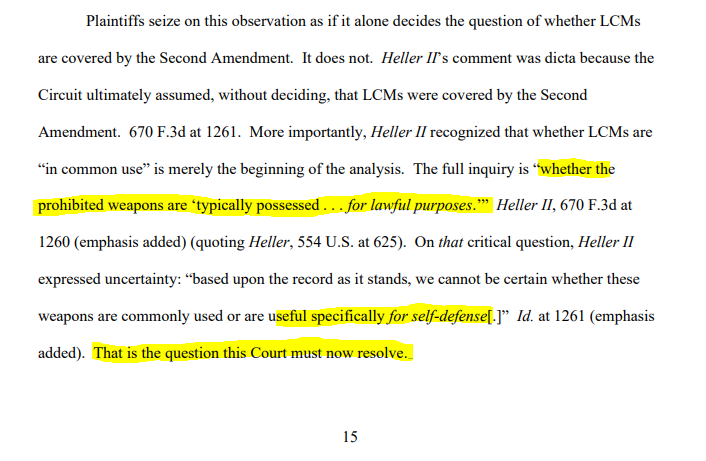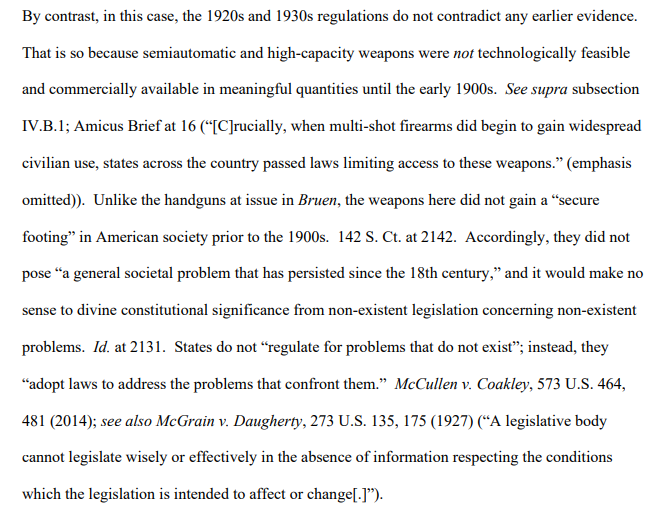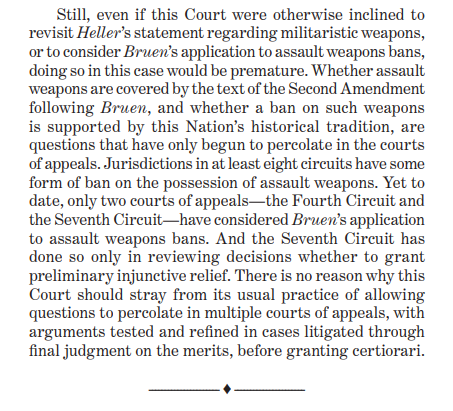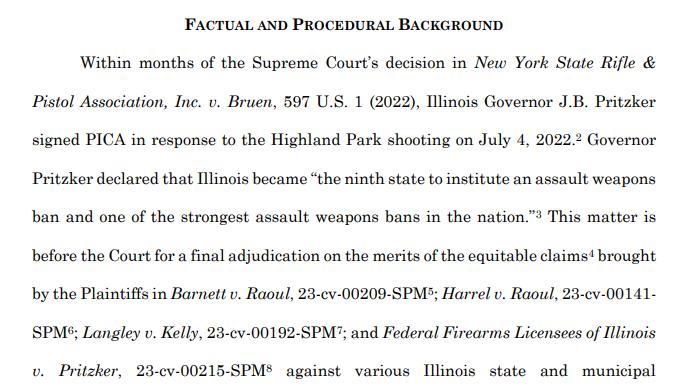Alright, let's talk about some of this ruling, and what it got right and wrong. Spoiler: it got most of the key questions wrong.
I am going to skip the factual and legal background sections (which tend to be the same in every such ruling) and jump right to the analysis.
I am going to skip the factual and legal background sections (which tend to be the same in every such ruling) and jump right to the analysis.
https://twitter.com/2Aupdates/status/1649094902142349312
What the judge did get right was that magazine are indeed arms under the Second Amendment. The idea that magazines are somehow not "arms" is something every state that bans magazines is trying to argue. I'm happy even this clearly hostile judge didn't buy this argument at least. 

Notice the sleight of hand here. He starts with "whether the prohibited weapons are ‘typically possessed . . . for lawful purposes.” That's the correct standard for 2A protection.
But then he narrows that to JUST self-defense, which is not the only lawful purpose.
But then he narrows that to JUST self-defense, which is not the only lawful purpose.

This seems like a dodge by the court to me, but if it is true that the Plaintiffs conceded this point too easily, they should argue it differently on summary judgment. 

This is such ahistorical nonsense. Just look at my thread on the 19th century commentary - military small arms are MOST protected by the Second Amendment. This is a point SCOTUS will have to clarify soon, because it will keep being abused. 

A common trend with bad-faith analyses by antigun judges is to basically sneak in barely-veiled interest balancing under the guise of a plain text analysis.
Here, this is just him saying the burden of a mag cap law is light. That's interest balancing.
Here, this is just him saying the burden of a mag cap law is light. That's interest balancing.

It's also straight up nonsense because even if the test were only about self-defense, the fact remains that many popular semiauto pistols today come standard with mags over ten rounds. Thus, they are commonly *owned* for self defense, which is the test.
Wow, now he's not even trying to hide the policymaking in his ruling. Police maintaining their advantage is NOT part of the Second Amendment analysis. Maybe this judge should run for congress and write bills with police exemptions if this is what he wants to do. 

And now, after he spent all that time magically switching the standard to commonly USED for self defense, he switches back and declares they are not typically POSSESSED for self defense. 

This is a straight up lie. The Winchester Model 1866 was absolutely sold to civilians, and sold pretty well too.
Regardless, the model 1873 was an even bigger hit, and since the state wants to use historical analogues as laste as the 20th century, that's relevant too.
Regardless, the model 1873 was an even bigger hit, and since the state wants to use historical analogues as laste as the 20th century, that's relevant too.

So? They were still a huge jump in capacity compared to the single-shot weapons that prevailed before. You could now fire as many as 16 shots before reloading. And not one state restricted these guns, nor the 5-6 shot revolvers that replaced flintlock pistols. 

We looked at the exact same laws in Duncan. Most only applied to machine guns, and most were repealed not too long after. 

The judge also pretended the DC law was representative, when it in fact was the outlier among these state-level machine gun capacity laws. This is from our Duncan briefing: 

So even if 20th century history was relevant here, and it isn't, the judge is relying on a single outlier and pretending it's a historical tradition. Even TODAY the vast majority of states do not restrict magazine capacity. How can there be any historical tradition?
Repeating arms became common in the 1850s for handguns and the 1860s for rifles. Yet firearm capacity was not regulated at all until the 1930s, and even most of those laws were repealed and only applied to machine guns. There is no historical tradition of regulating capacity. 

This is dumb. There were several more states by the 1930s compared to 1868. Six states is not a sufficient amount of states, even if the 20th century history were relevant. 

All in all, a very disappointing ruling loaded with bad faith analysis. An antigun judge knew exactly what he was going to do before he read a single brief.
• • •
Missing some Tweet in this thread? You can try to
force a refresh



















